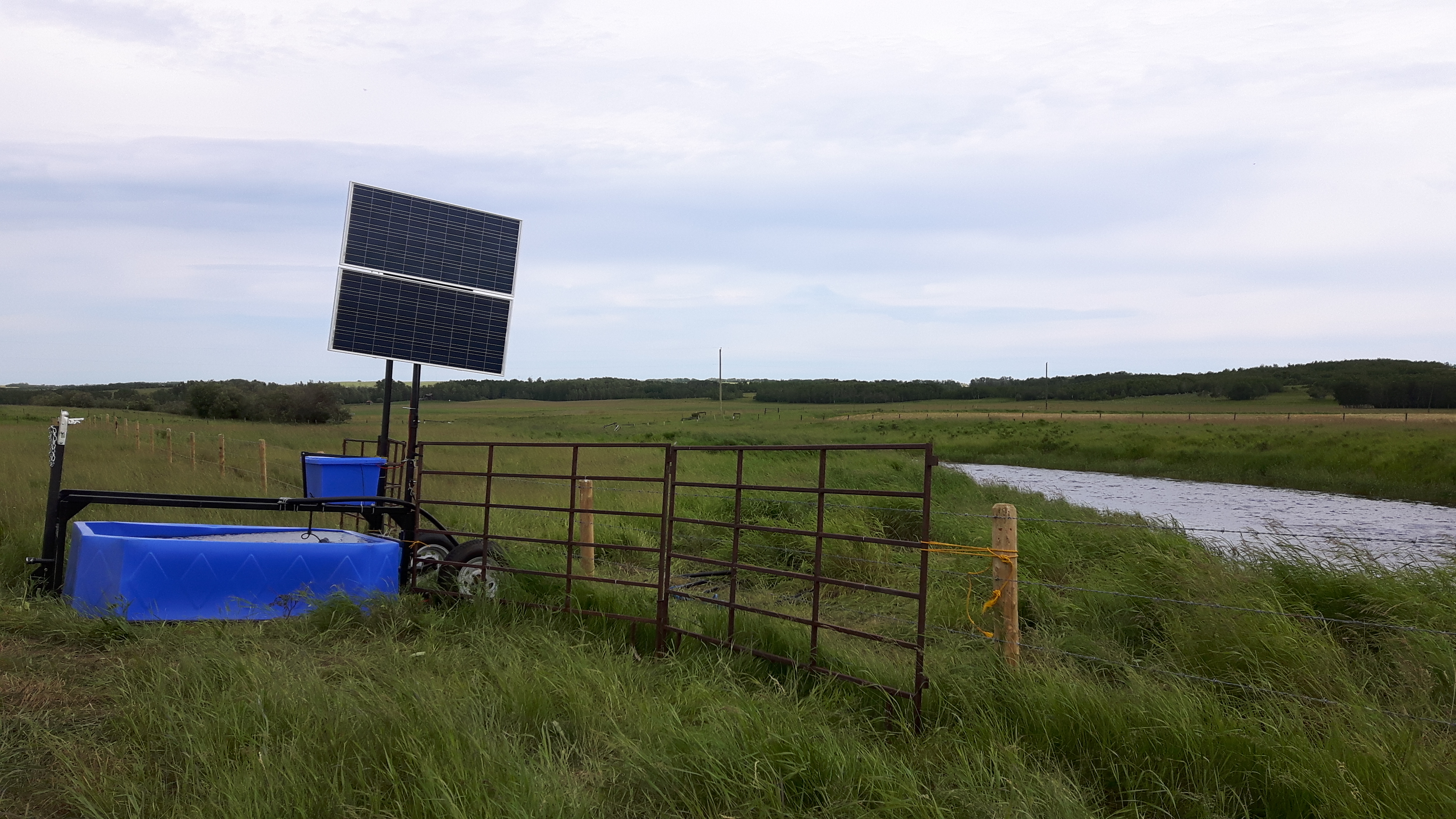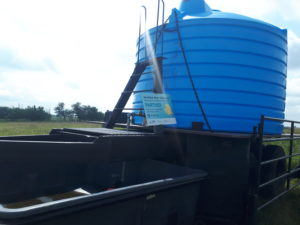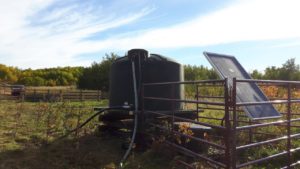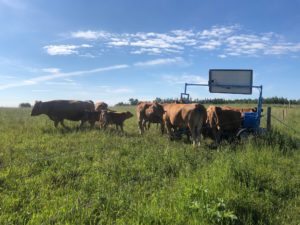Win-Win for Watering Systems
By Grace Turner, former co-op student at the NSWA
Reliable access to water is an important consideration for agricultural producers when creating a grazing plan for their livestock. In addition to man-made dugouts, livestock often drink from natural systems such as wetlands, springs and streams. However, if not mitigated, access to these waterbodies often results in negative consequences to bank structure, riparian area integrity, and water quality. Hoof shear from cattle can damage vegetation and erode banks. Urine and fecal contamination reduces water quality and increases risk of parasites (e.g., Giardia spp.) and algal growth.
Livestock presence in a waterbody can have negative effects on the livestock as well. A study published in the Journal of Range Management looked at the effects of fecal contamination on livestock water consumption and resulting weight gain. Willms et al. 2002 noted that when given a choice, cattle prefer and select water with less manure contamination. Drinking cleaner water also resulted in higher weight gains for both calves and yearlings–an important economic benefit for producers. In order to provide cleaner water and capitalize on better weight gains, many producers are turning to off-site or off-stream watering systems.
Whether paired with a dugout or natural waterbody, off-site watering systems all work on a similar premise: a water line paired with a pump and trough or bowl allows water to be delivered from the source to the trough some distance away. This allows livestock to consume water without having to wade in and contaminate it, and also reduces the animals’ physical impacts to sensitive riparian and aquatic ecosystems. Although these watering systems do require maintenance, advances in technology such as remote alarm systems and drone surveillance have increased their popularity, ease-of-use, and return on investment.
Benefits of Off-site Watering

- Livestock prefer to drink clean water and will choose to drink from an off-site watering system more often then from the body of water in their pasture
- Reduces the amount of time livestock spend in riparian areas and along the banks of rivers reducing the potential for erosion and over-grazing
- Numerous studies have shown that livestock weight will increase when they are given access to clean water
- An increase in weight= an increase in money!
There are several companies in Alberta with a range of off-site watering set ups, depending on a producers’ needs. Or, one can construct their own! Seasonality, herd size, placement of system, and type of waterbody are all considerations when choosing a system.
Options for Off-site Watering Systems
- Solar or wind powered
- Summer and winter troughs
- Portable and permanent
As part of the Vermilion River Watershed Restoration & Enhancement Project (VRWREP), several producers within the Vermilion River Watershed have installed off-site watering systems at over 20 sites as a way to protecting natural water bodies on their land while still ensuring clean, reliable water for their livestock. By reducing livestock impacts to riparian systems and water bodies while providing cleaner drinking water to livestock, the implementation of these systems are truly a win-win for both the producer and the environment.



